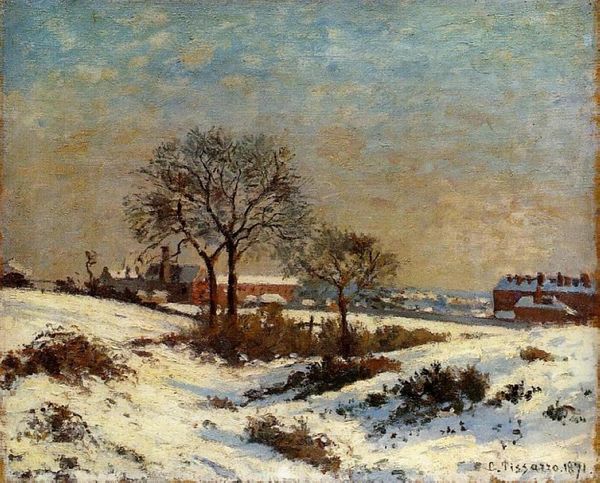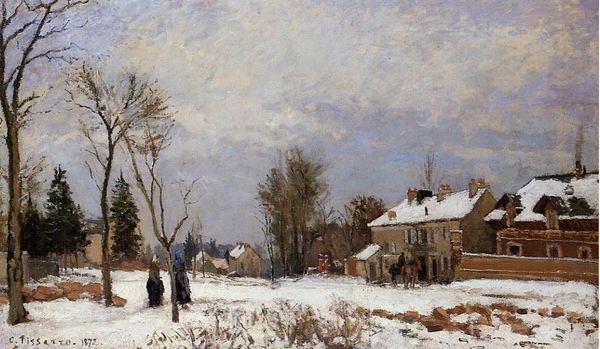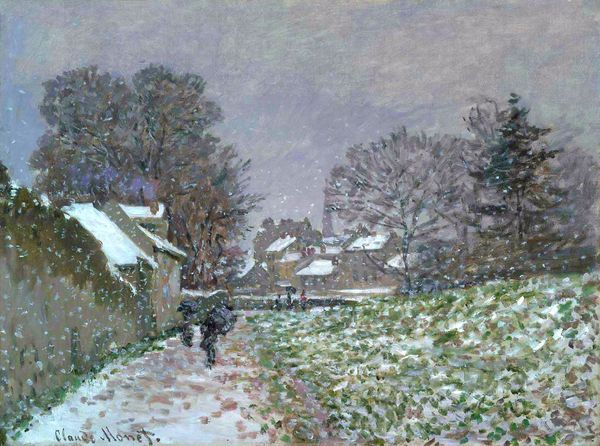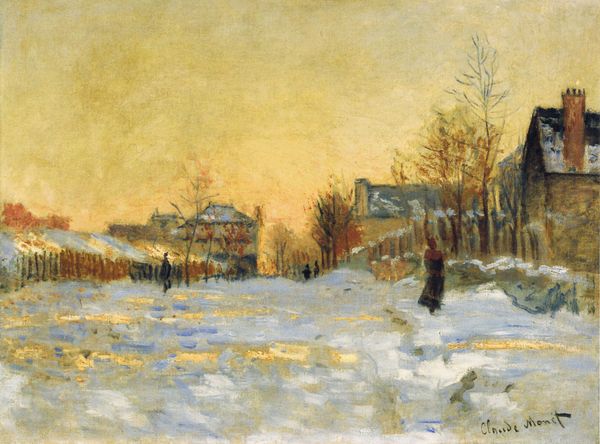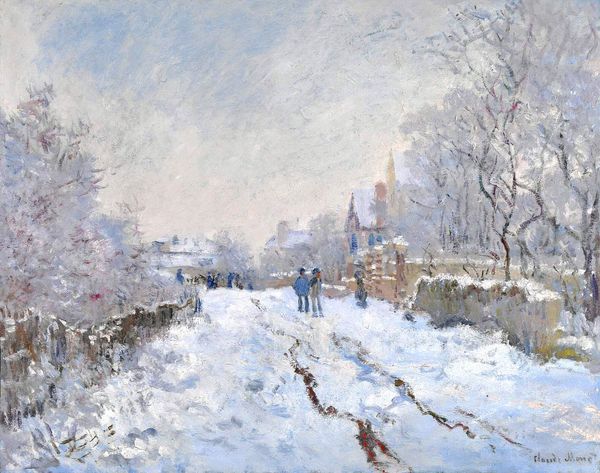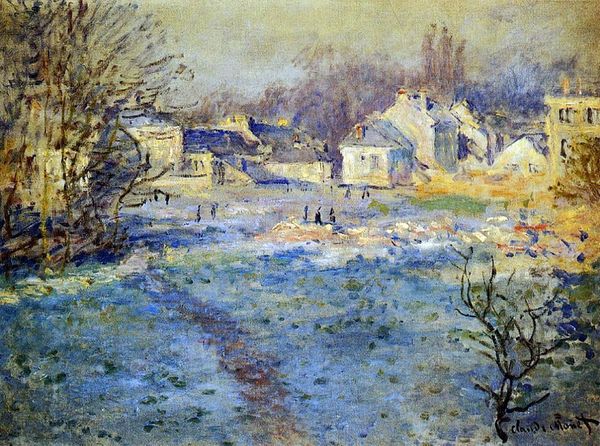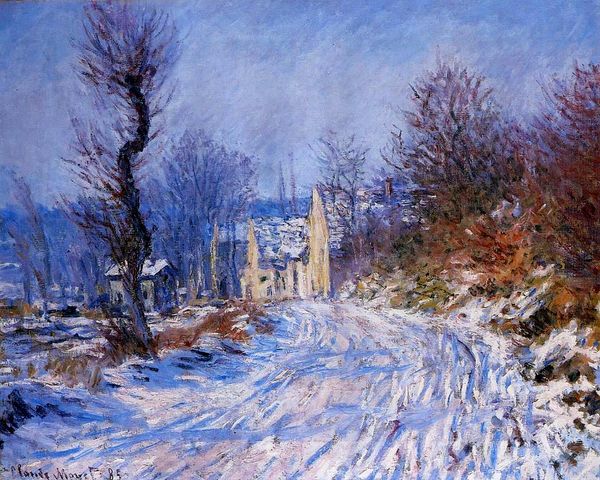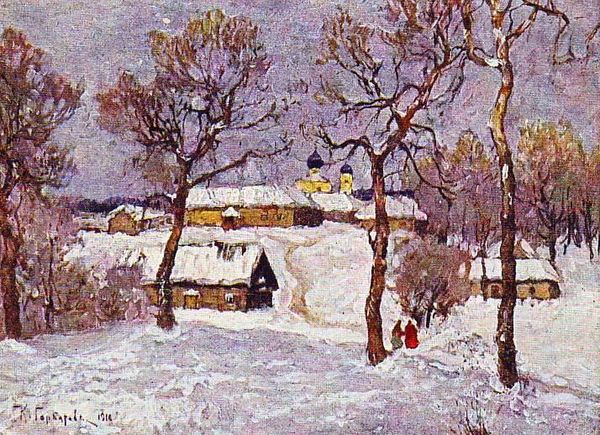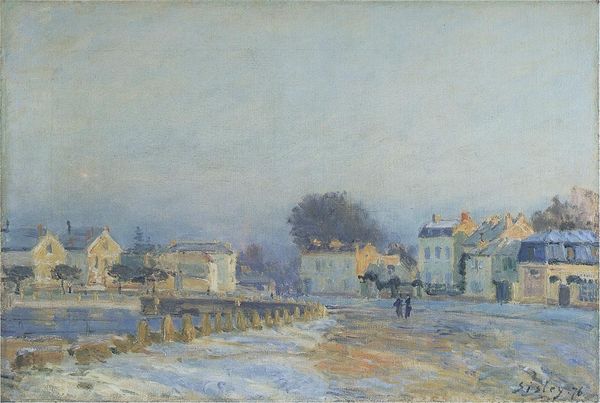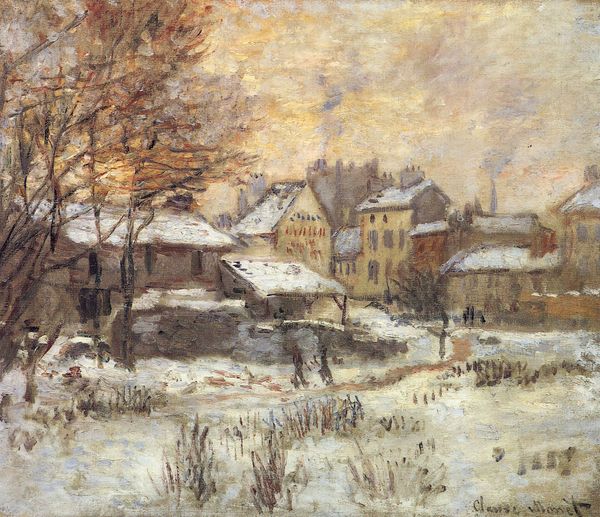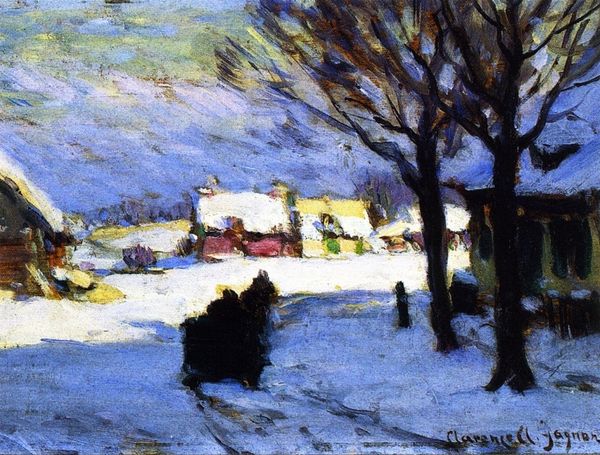
painting, plein-air, oil-paint
#
tree
#
snow
#
sky
#
painting
#
impressionism
#
plein-air
#
oil-paint
#
landscape
#
figuration
#
oil painting
#
road
Dimensions: 54 x 65 cm
Copyright: Public domain
Editor: Here we have Alfred Sisley’s "The Effect of Snow at Argenteuil," painted in 1874. It's an oil painting that depicts a snow-covered landscape. I'm struck by the coldness, the almost bleak stillness of the scene. What do you see in this piece? Curator: Beyond the picturesque, I see a moment ripe with social commentary. Think about 1874 France – a nation still reeling from the Franco-Prussian War. Sisley's snow isn't just weather; it’s a visual metaphor. It blankets everything, erases distinctions, mirroring, perhaps, a society attempting to rebuild and reconcile after conflict. Who bears the brunt of that kind of societal reset? Editor: So, you're saying the seemingly innocuous landscape touches on deeper issues of inequality and power dynamics after a war? Curator: Precisely. The figures trudging through the snow – who are they? Are they the landed gentry out for a stroll, or are they the working class navigating a harsh reality made harsher by social upheaval? Consider how landscape painting at this time was often associated with bourgeois leisure. Sisley disrupts this, subtly embedding labor and the everyday struggles of ordinary people within a seemingly idyllic scene. Editor: That's not something I would have immediately picked up on, I must admit. So, are you suggesting that Impressionism, beyond its aesthetic concerns, can also act as a subtle form of social critique? Curator: Absolutely. Sisley and his contemporaries weren't just capturing light; they were capturing a moment in time, infused with the social and political tensions of their era. How does seeing that reflected in the painting reshape your initial feelings of "bleak stillness"? Editor: It shifts everything. It's not just a pretty picture; it's a reflection of a society trying to find its footing. It’s making me rethink Impressionism as more than just capturing fleeting moments of light and color. Thanks for pointing this out! Curator: And thank you for being open to new ways of seeing.
Comments
No comments
Be the first to comment and join the conversation on the ultimate creative platform.
